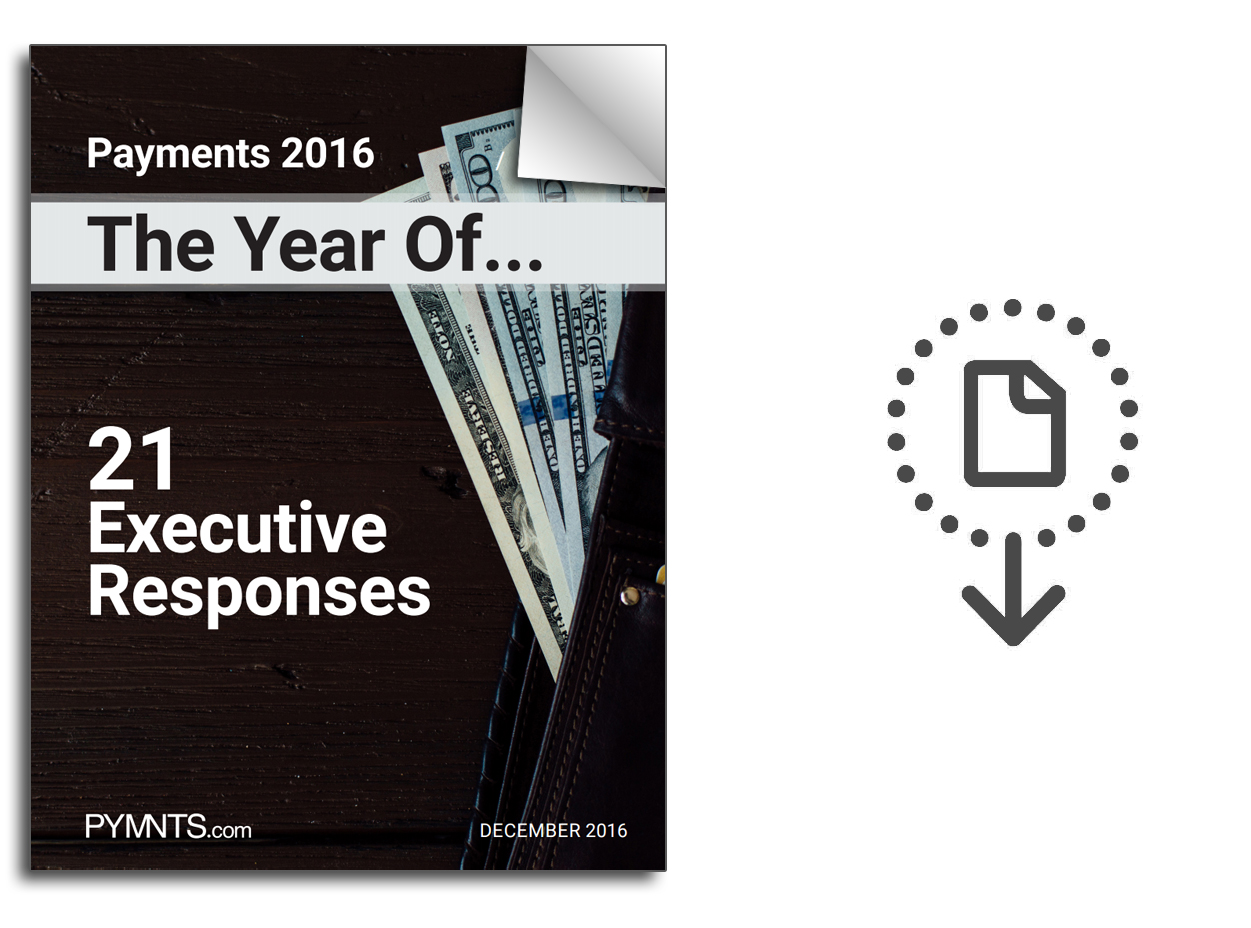Payments 2016: The Year Of Partnership Via API

PYMNTS consulted 21 payments executives from across the industry to share their insights on the biggest takeaways from 2016 as part of the “Payments 2016, The Year Of…” eBook. We posed the same question to each executive:
If you had to answer the question, Payments was the year of …, how would you answer, and how does your answer change your world — and the world of payments, more broadly?
Here is the response from Bruce Dragt, SVP of Product for YapStone…
Payments 2016: The Year Of Partnership Via API
How many meetings or conversations did you have in 2016 that rallied around the statement, “We have an API that …”? From CEOs to sales directors, from startups to traditional companies, from payment networks to pretty much everyone, we have simplified the solutions of the payments world to an API. Generally, these APIs are immediately viewable and testable through portals, which make the dreaded “can we integrate” conversation a thing of the past. More important, APIs have given rapid rise to developing cross-company partnerships that have erased many of the lines between startups and traditional companies as well as competitors and partners.
Partnerships and APIs have broken the traditional roadblocks by decomposing services into micro-services that work together to create a total solution. In the past, all of this would need to come through integration to one company. Now, companies can collaborate to provide a service made up of their micro-services working together for the end client. This gives a best-of-breed approach, which enables innovation and legacy services to coexist.
Imagine harnessing the power of both emerging FinTech companies and traditional powerhouses. The same transaction can see a lifecycle that touches multiple partners seamlessly and leverages the unique value of each partner. In the past, any type of “multi-hop” transaction flow was about the alteration of message formats, whereas now this type of multipartner transaction is consuming business services from each of the providers. Those business services represent the real value of each of the companies involved in that transaction, and the value of each service provider is clearly known versus being the only option that was part of a monolithic transaction flow.
The key innovations that are driving this change include:
- APIs, specifically those that represent decomposed services. With direct access to these APIs, code samples and online documentation, the ease of sandboxes and testing, the industry has never had better access to micro-services.
- Security. Tokenization and network tokenization have given rise to making much of a payment transaction payload as being “valueless” to those who commit fraud. While an important advancement in and of itself, this has enabled transactions to utilize multiple providers and multiple micro-services without needing to only be processed behind the big firewall of a single provider.
- Platforms and software as a service. The whole concept of on-demand services enables the ability to select specific micro-services from providers and associate value and corresponding expense to each one. This is like being able to select the channels you want from your cable provider versus the full package.
- Cloud hosting and virtual connections. The speed of consuming micro-services is key. With so many providers no longer hosted in legacy data centers (how many times have you heard, “We use AWS; how about you?”) and the removal of hard-wired connections, the latency in calling and sequencing transactions across these micro-services has been made possible.
As a FinTech company, we continue to partner with traditional players and other new FinTech companies to deliver the specific solutions that large, vertical markets demand. With partnerships that utilize the micro-services that APIs provide, we can deliver solutions more rapidly, improve solutions without significant rework and create the value unlock that our clients need.
We spend a great deal of time getting to know the specific pain points of each of the vertical markets we serve and remain focused on developing the right solutions for each. We don’t believe we need to invent in all of these solutions, as we can partner with others who complement our own capabilities. This has driven us to be specific in the solutions and corresponding set of APIs our clients need to utilize to solve the needs for their markets. While they are simple to use, our APIs are also specific to solving problems rather than being generic and requiring a client to try to determine how to use them. Instead, we believe our APIs should be directly apparent and directly applicable.
In looking back, I think 2016 will be viewed as a significant turning point in payments. The openness of the ecosystem and the partnerships that span traditional and new companies to deliver solutions have seen a pivot. The closed-walled environments are going away, and the open but secure environments are providing for new partnerships that maximize value. This will be the basis for the future of payments in years to come.
. . . . . . . . . . . . . .

